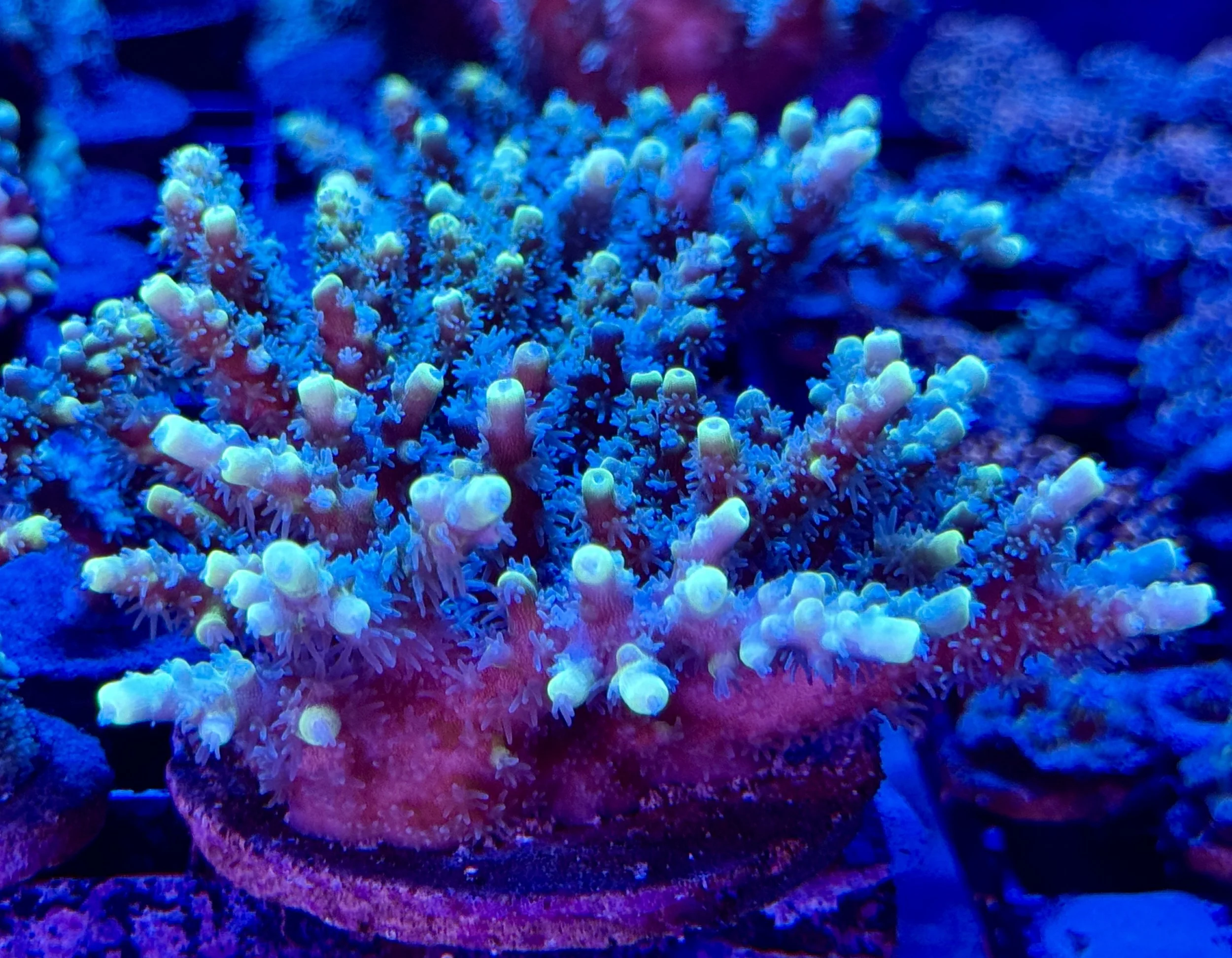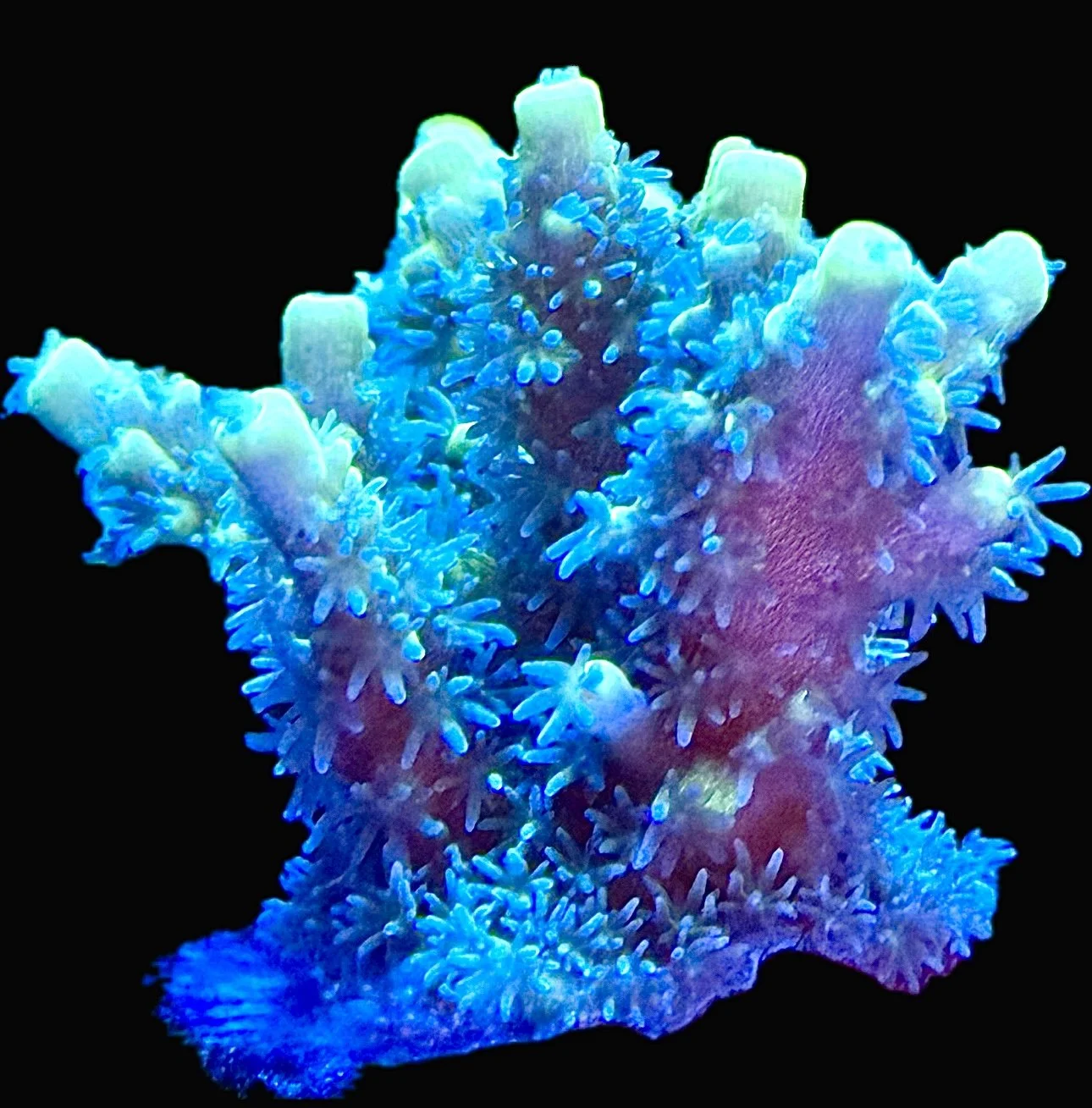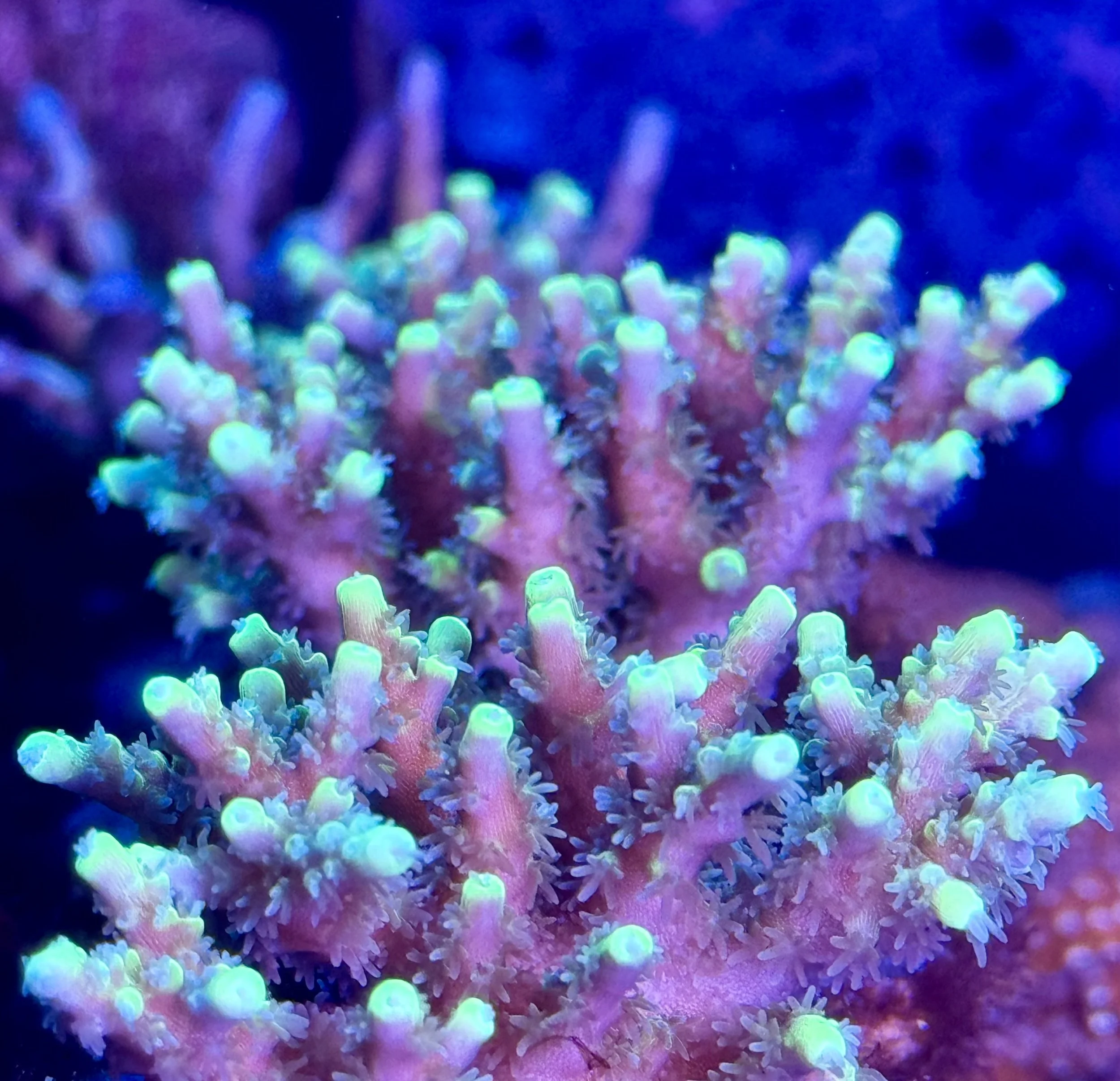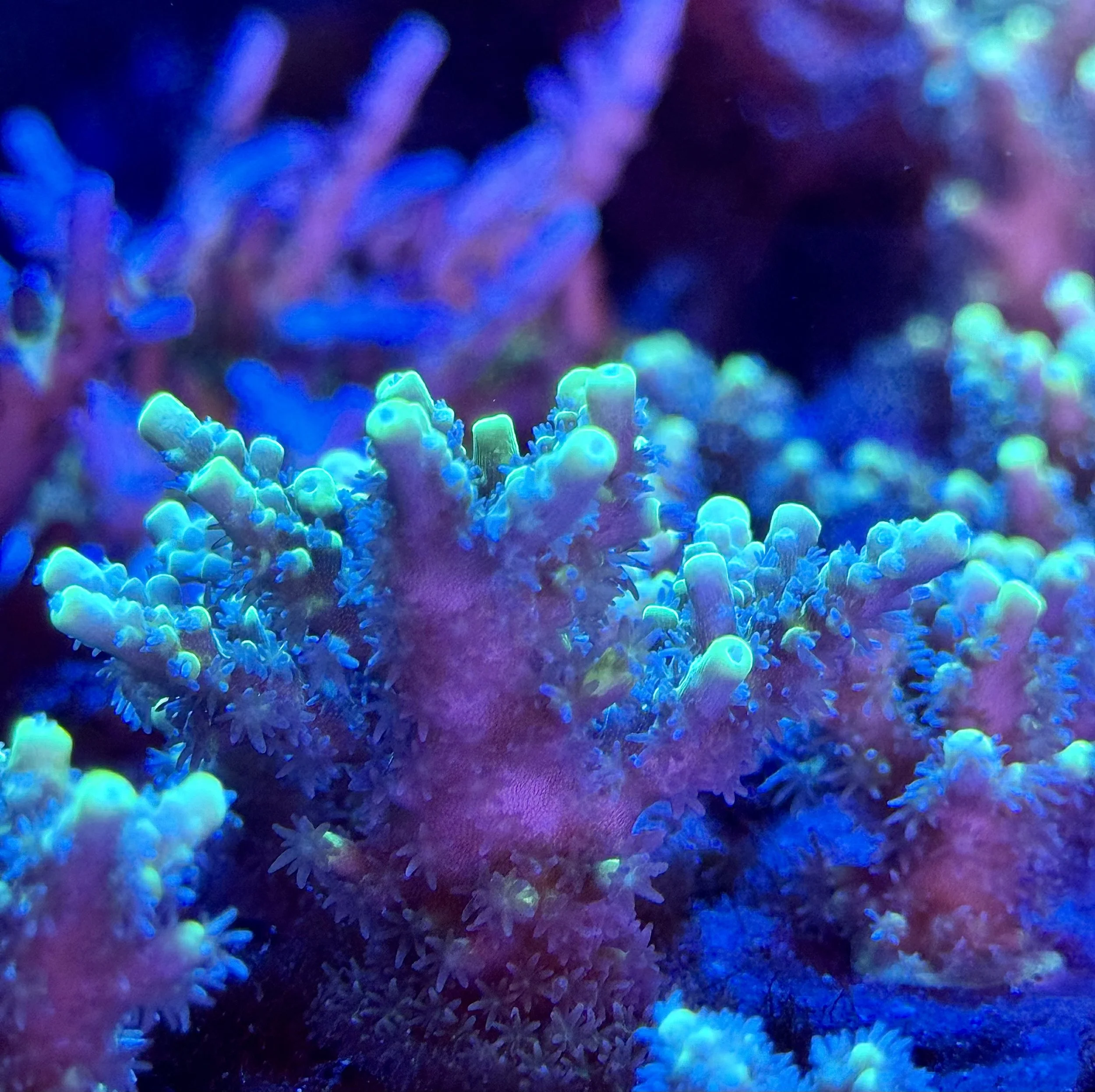SPS Corals – Build a Vibrant, Thriving Reef
SPS Corals, or Small Polyp Stony Corals, are some of the most eye-catching and rewarding corals you can add to your reef tank. Known for their tiny polyps and strong, rigid skeletons, SPS corals like Acropora, Cyphastrea, Digitata, Pocillopora, Leptastrea, and Montipora create striking shapes and structures that make your aquarium look like a miniature reef landscape. Their delicate polyps often show vivid colors—bright greens, purples, blues, and oranges—that shimmer under blue or actinic lighting, adding movement and life to your display.
SPS corals are slightly more advanced to care for, but their rewards are unmatched. They thrive under high-intensity light and strong water flow, which helps keep their polyps clean and encourages healthy growth. Because they grow on calcium-rich skeletons, they contribute structure and dimension to your reef, creating natural hiding spots for fish and other invertebrates. With proper care, branching Acropora can spread into intricate “tree-like” colonies, while encrusting Montipora and Cyphastrea form colorful plates and mounds that make your tank look vibrant and full.
Despite being higher-maintenance than soft corals or mushrooms, SPS corals are extremely rewarding for hobbyistswho enjoy building complex reefscapes. They respond beautifully to stable water parameters and occasional feeding, and their color intensity often improves under the right conditions. SPS corals are perfect for aquarists who want dynamic texture, bold color, and a living sculpture effect in their tanks.
At coralSLover®, we offer a carefully curated selection of aquacultured SPS corals, sustainably grown to ensure vibrant colors, strong growth, and healthy specimens. Because our corals are grown in controlled aquaculture systems, they have a higher chance of successfully adapting to home reef tanks, providing hobbyists with greater stability and resilience. Each coral is nurtured to thrive in a variety of aquarium conditions, giving you confidence that your SPS collection will flourish and bring lasting beauty to your reef.
Care at a Glance – SPS Corals
Lighting: High and stable PAR levels are crucial for SPS health and vibrant coloration. These corals thrive best under strong, consistent lighting provided by high-quality LED, T5, or hybrid fixtures. Proper acclimation to light intensity helps prevent bleaching and promotes steady growth.
Flow: Strong, turbulent water movement is essential to keep delicate tissues clean, deliver nutrients, and encourage healthy polyp extension. A random, alternating flow pattern works best to mimic natural reef conditions.
Placement: Position SPS frags or colonies on mid to upper rockwork to maximize both light and flow exposure. Secure mounting is important, as SPS corals often encrust rapidly before branching outward. Strategic placement also allows room for future growth without shading neighboring corals.
Water Quality: Pristine and stable water parameters are non-negotiable. Maintain balanced alkalinity, calcium, and magnesium levels, with low but detectable nutrients to sustain healthy growth and coloration. Even small parameter fluctuations can affect SPS polyp extension or lead to color loss, so consistent monitoring and dosing are key.
Feeding: While SPS corals derive most of their energy from photosynthesis via their symbiotic zooxanthellae, they also benefit from occasional broadcast feeding of fine particulate coral foods to enhance growth, coloration, and overall vitality.
Difficulty: Best suited for intermediate to advanced hobbyists. SPS corals thrive in well-established reef systems where conditions remain stable over time and regular testing is part of the routine.
Sustainability: All SPS corals offered by coralSLover are fully aquacultured with zero wild collection, making them eco-conscious, tank-hardy, and better adapted to aquarium life.




